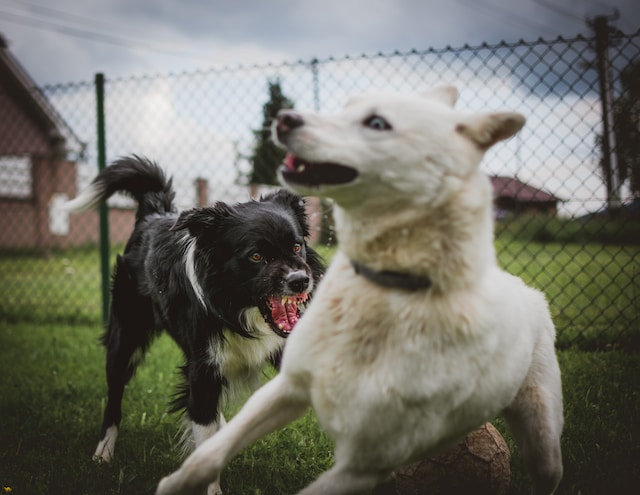As a dog owner, you may have experienced the frustration of coming home to find your dog has destroyed their crate. Crate destruction is a common issue faced by many dog owners, and it can be both distressing and costly.
In this article, we will explore the causes of crate destruction, signs to look out for, and effective prevention and solutions to address this behavior.
Crate training is a popular method used to teach dogs to feel safe and secure in a confined space. It can be used for various purposes, such as housebreaking, preventing destructive behavior, and providing a safe space for the dog to rest.
However, some dogs may exhibit destructive behavior when left alone in a crate, causing damage to the crate and belongings, and even injuring themselves in the process.
Causes of Crate Destruction
There are several reasons why a dog may destroy their crate when left alone:
Separation anxiety
One of the primary causes of crate destruction is separation anxiety. Dogs are social animals and may experience anxiety when left alone for extended periods.
The destructive behaviors associated with separation anxiety can vary, but often include scratching, biting, and chewing on the crate.
Dogs may scratch at the crate in an attempt to escape or vocalize their distress, resulting in damage to the crate’s walls, floor, or door. They may also bite or chew on the crate out of frustration, anxiety, or boredom, causing damage to the crate’s bars or other components.
These destructive behaviors are often an attempt by the dog to alleviate their anxiety or express their distress, but they can result in significant damage to the crate and may even harm the dog, such as broken teeth or injured paws.
It’s important to note that dogs with separation anxiety are not being intentionally destructive or “bad” – they are simply expressing their anxiety in the only way they know how.
Boredom
Dogs are naturally curious and social animals that require mental stimulation to stay engaged and content. However, when left alone in a crate without any form of entertainment, dogs may become bored, which can lead to destructive behaviors. Boredom-induced destructive behaviors can include chewing on the crate, scratching at it, or attempting to escape in an effort to alleviate their boredom.
Boredom can be a significant contributing factor to crate destruction in dogs. Dogs have a natural instinct to explore, investigate, and engage in various activities.
When they are confined to a crate for extended periods without any opportunities for mental stimulation or physical activity, they may become restless, frustrated, and ultimately resort to destructive behaviors as a way to alleviate their boredom.
Chewing on the crate, scratching at it, or trying to escape can be a dog’s way of seeking stimulation or engaging in natural behaviors.
This can result in damage to the crate, such as broken or chipped teeth from chewing on the bars or scratching at the walls or floor. In some cases, dogs may even injure themselves while attempting to escape, leading to cuts, abrasions, or broken nails.
To prevent boredom-induced crate destruction, it’s important to provide dogs with ample mental stimulation and physical activity before crating them.
This can include providing puzzle toys, treat-dispensing toys, or other forms of enrichment that can keep their minds engaged. Additionally, regular exercise and playtime can help tire out dogs, reducing their boredom and anxiety levels when crated.
Fear or phobia
Some dogs may have a fear or phobia of being confined in a crate, which can be due to past traumatic experiences or lack of exposure during their early socialization period. When left alone in a crate, these fearful dogs may experience anxiety and exhibit destructive behaviors as a coping mechanism.
The fear of being confined in a crate can trigger their anxiety and result in behaviors such as scratching, biting, or attempting to escape the crate. It’s crucial to understand and address this fear in fearful dogs to prevent destructive behaviors and ensure their emotional well-being while crated.
Lack of proper crate training
Proper crate training is essential to ensure that dogs view their crates as a safe and comfortable space. However, if a dog is not properly introduced to the crate or gradually accustomed to it, it can result in negative associations and potentially lead to destructive behaviors when left alone.
Improper crate training can include forcing a dog into the crate, using the crate as a form of punishment, or leaving the dog in the crate for extended periods of time without proper acclimation. These practices can create fear, stress, and anxiety in dogs, leading to negative associations with the crate.
When dogs have negative associations with the crate, they may exhibit destructive behaviors as a response to their discomfort or distress. This can include scratching, biting, or attempting to escape the crate in an effort to avoid being confined or cope with their negative emotions.
To prevent crate destruction due to improper crate training, it’s crucial to follow positive reinforcement-based crate training methods.
This includes gradually introducing the dog to the crate in a positive and rewarding manner, using treats, toys, and praise to create positive associations.
Gradual acclimation to being alone in the crate, starting with short durations and gradually increasing, can also help dogs feel more comfortable and prevent destructive behaviors.
Signs of Crate Destruction

It’s essential to be aware of the signs that your dog may be engaging in crate destruction. Some common signs include:
Damaged crate
Obvious signs of crate destruction include damage to the crate itself. This may include chewed or scratched walls, bent bars, or broken doors.
Injuries to the dog
Destructive behavior in the crate can also result in injuries to the dog. Dogs may hurt themselves while trying to escape from the crate or by ingesting materials from the crate, such as plastic or metal.
Destruction of belongings
Dogs may also destroy belongings placed inside the crate, such as blankets, toys, or cushions. This can result in costly replacements and damage to personal belongings.
Changes in behavior
Crate destruction can also manifest in changes in a dog’s behavior. They may become more anxious, restless, or agitated when approached with the crate, or display avoidance behavior towards the crate altogether.
Prevention and Solutions
The good news is that crate destruction can be prevented and addressed with proper strategies. Here are some effective prevention and solution methods:
Gradual crate training
Proper crate training is crucial to prevent crate destruction. Gradually introduce your dog to the crate in a positive and rewarding manner. Start by allowing your dog to explore the crate with the door open, then gradually increase the duration of crate confinement while rewarding your dog for calm behavior. This will help your dog develop positive associations with the crate and reduce the likelihood of destructive behavior.
Providing mental stimulation
Boredom is a common trigger for crate destruction. Provide your dog with mental stimulation by providing puzzle toys, chew toys, or treat-dispensing toys inside the crate. This will keep your dog engaged and entertained, reducing the risk of destructive behavior.
Addressing separation anxiety
If your dog has separation anxiety, it’s important to address it to prevent crate destruction. Gradual desensitization and counter-conditioning techniques, along with positive reinforcement, can help your dog feel more comfortable being alone in the crate. Additionally, you can try leaving comforting items, such as your clothing or a blanket with your scent, in the crate to provide a sense of security.
Using positive reinforcement
Positive reinforcement is a powerful tool in training and preventing destructive behavior. Reward your dog for calm behavior in the crate, and avoid punishment or scolding, as it can worsen anxiety and fear. Use treats, praise, and toys as rewards to reinforce positive behavior and create a positive association with the crate.
Seeking professional help
If your dog’s crate destruction persists despite your efforts, it’s important to seek professional help from a certified dog trainer or a veterinary behaviorist. They can assess the underlying causes of the behavior and provide customized solutions to address the issue effectively.
Conclusion
Crate destruction can be a frustrating and costly issue for dog owners, but it can be prevented and addressed with proper strategies.
Gradual crate training, providing mental stimulation, addressing separation anxiety, using positive reinforcement, and seeking professional help when needed are effective approaches to prevent and resolve crate destruction behavior in dogs.
FAQs
Here are some frequently asked questions related to dog crate destruction:
Can crate destruction be prevented?
Yes, crate destruction can be prevented by gradually crate training your dog, providing mental stimulation, addressing separation anxiety, using positive reinforcement, and seeking professional help if needed.
How to crate train a dog effectively?
Effective crate training involves gradual introduction to the crate, rewarding calm behavior, providing mental stimulation, and using positive reinforcement. Seek guidance from a certified dog trainer for specific crate training techniques.
What are some signs of separation anxiety in dogs?
Signs of separation anxiety in dogs may include excessive barking, destructive behavior, house soiling, restlessness, and changes in appetite or behavior when left alone.
Should I punish my dog for crate destruction?
No, punishment is not recommended as it can worsen anxiety and fear in dogs. Instead, focus on positive reinforcement and addressing the underlying causes of the behavior.
When should I seek professional help for crate destruction?
If your dog’s crate destruction persists despite your efforts, it’s advisable to seek professional help from a certified dog trainer or a veterinary behaviorist. They can assess the underlying causes of the behavior and provide customized solutions to address the issue effectively.
In conclusion, crate destruction in dogs when left alone can be a challenging issue for dog owners. Understanding the underlying causes and implementing preventive measures, such as gradual crate training, providing mental stimulation, addressing separation anxiety, using positive reinforcement, and seeking professional help when needed, can greatly reduce the risk of crate destruction behavior in dogs.






